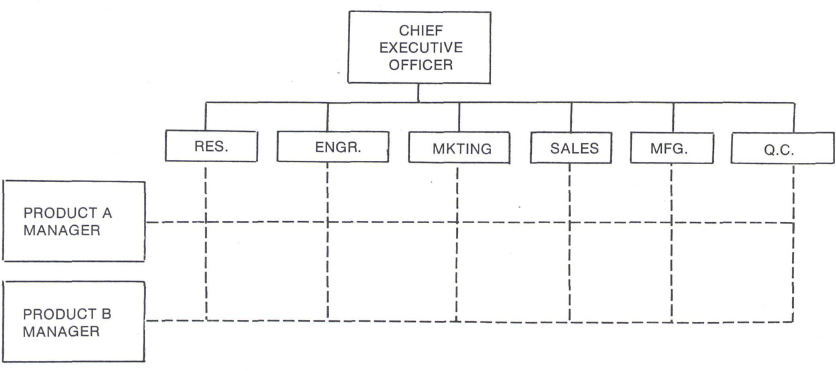Matrix Organization
| 1 minuteThe purpose of this document is to describe the Organizational Structure approach inside the AdvaCare Pharma.
Organizational Structure
The Organizational structure refers to the way a company or organization is arranged or structured. Who reports to Who, in simple words. The two most common structures for a Company are Classic (Functional) and Matrix.
Matrix Organization
A matrix organization is defined as one in which there is dual or multiple managerial accountability and responsibility. However, the term matrix means quite different things to different people and in different industries (1)(5). In a matrix there are usually two chains of command, one along functional lines and the other along project, product, or client lines. Other chains of command such as geographic location are also possible.
The matrix organizational form may vary from one in which the project manager holds a very strong managerial position to one in which he plays only a coordinating role. To illustrate the organizational principles, a matrix will be considered first in which there is a balance of power between the project and functional managers. It must be recognized that such a balanced situation, considered by some authorities to be ideal, probably seldom occurs in practice.
In few words, understanding the Matrix Organization when having people above oneself (normal classic approach) but also in adjacent departments who expect to hear updates on your work progress (e.g. at Google Company, there are major functions (Departments) like Sales, Marketing, etc. however also exists Programs (collection of projects) for Products/Services like Google Search, Google Maps, etc., where there are program managers, engineers, UX designers and other roles).
AdvaCare Organizational Structure
Currently, AdvaCare is built under a Matrix Structure, handling the Functional Departments (Managers) and at the same time running different projects which involve the participation of members from different organizational units.

Figure 1. A product industry matrix organization, PMI Guideline:
https://www.pmi.org/learning/library/matrix-organization-structure-reason-evolution-1837